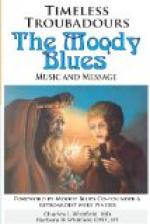assert that the elopement took place with the connivance
of Cunizza’s brother, the notorious Ezzelino
III. (
Inf. xii. 110): the date is approximately
1225. At any rate, Sordello and Cunizza betook
themselves to Ezzelino’s court. Then, according
to the Provencal biography, follows his secret marriage
with Otta, and his flight from Treviso, to escape
the vengeance of her angry relatives. He thus
left Italy about the year 1229, and retired to the
South of France, where he visited the courts of Provence,
Toulouse, Roussillon, [102] penetrating
also into Castile. A chief authority for these
wanderings is the troubadour Peire Bremen Ricas Novas,
whose
sirventes speaks of him as being in Spain
at the court of the king of Leon: this was Alfonso
IX., who died in the year 1230. He also visited
Portugal, but for this no date can be assigned.
Allusions in his poems show that he was in Provence
before 1235: about ten years later we find him
at the court of the Countess Beatrice (
Par.
vi. 133), daughter of Raimon Berengar, Count of Provence,
and wife of Charles I. of Anjou. Beatrice may
have been the subject of several of his love poems:
but the “senhal” Restaur and Agradiva,
which conceal the names possibly of more than one lady
cannot be identified. From 1252-1265 his name
appears in several Angevin treaties and records, coupled
with the names of other well-known nobles, and he
would appear to have held a high place in Charles’
esteem. It is uncertain whether he took part
in the first crusade of St Louis, in 1248-1251, at
which Charles was present: but he followed Charles
on his Italian expedition against Manfred in 1265,
and seems to have been captured by the Ghibellines
before reaching Naples. At any rate, he was a
prisoner at Novara in September 1266; Pope Clement
IV. induced Charles to ransom him, and in 1269, as
a recompense for his services, he received five castles
in the Abruzzi, near the river Pescara: shortly
[103] afterwards he died. The circumstances
of his death are unknown, but from the fact that he
is placed by Dante among those who were cut off before
they could repent it has been conjectured that he came
to a violent end.
Sordello’s restless life and his intrigues could
be exemplified from the history of many another troubadour
and neither his career nor his poetry, which with
two exceptions, is of no special originality, seems
to justify the portrait drawn of him by Dante; while
Browning’s famous poem has nothing in common
with the troubadour except the name. These exceptions,
however, are notable. The first is a sirventes
composed by Sordello on the death of his patron Blacatz
in 1237. He invites to the funeral feast the
Roman emperor, Frederick II., the kings of France,
England and Aragon, the counts of Champagne, Toulouse
and Provence. They are urged to eat of the dead
man’s heart, that they may gain some tincture
of his courage and nobility. Each is invited in
a separate stanza in which the poet reprehends the
failings of the several potentates.




